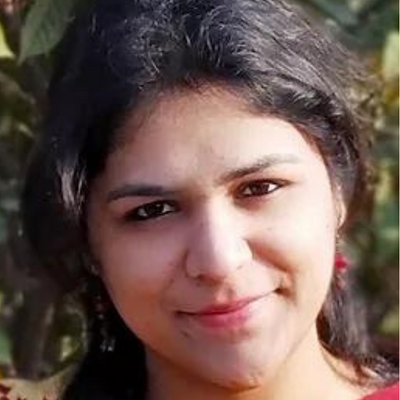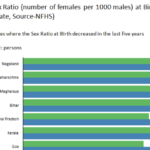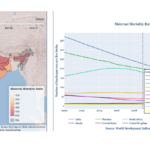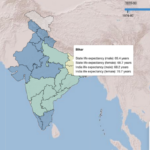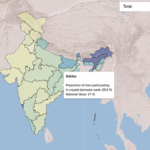India’s mixed progress on improving its skewed sex ratio at birth
India’s notoriously low sex ratio at birth (SRB) has improved in recent years but the gains are led by urban parts, while progress in rural parts appears to be stagnating, data released recently by the Census’ Sample Registration System (SRS) bulletin shows.
The sex ratio at birth is the ratio of newborn babies based on sex at the time of birth. In the absence of any manipulations, in nature, 105-107 human males are born to every 100 females across all populations. 105 boys to 100 girls translates to 950 girls for every 1,000 boys, which is the way India reports SRB. But since the 1980s, spread of pre-natal diagnostic techniques and their misuse for identifying the sex of the fetus (illegal under the PC-PNDT Act of 1994) has led to illegal sex selective abortions: the millions of “missing girls” in India. While the PC-PNDT Act has existed since 1994, it is only in recent years that its sex ratio at birth has started to see some improvement.
For every 1,000 boys born in the country in the period 2018-20, 907 girls were born, data from the SRS Bulletin for 2020 shows. This is up from 876 in 2005 and 898 in 2014-16. The ratio was slightly better for urban India (910) than for the rural parts of the country (907), the data shows.
Among states, Kerala had the best sex ratio with 974 girls born for every 1,000 boys in 2018-20, which is higher than the natural average of 950. It was followed by Chhattisgarh and Himachal Pradesh, with SRB of 958 and 950, respectively. Only these three states reported a healthy SRB. Uttarakhand, Delhi and Haryana had the worst ratios with only 844, 860 and 870 girls born for 1,000 boys, respectively.
It is important to note that the numbers recorded by the SRS are lower than what other government surveys show. For example, the National Family Health Survey (2019-21) pegged India’s SRB at 929, while the Health Management Information System (HMIS) which is based on information provided by health workers and institutions estimates it to be 937 as of 2020-21. This has been attributed to sampling errors since the SRS is based on a sample of geographic units (Kulkarni, 2020). But irrespective of the exact figures, all surveys point to a positive trend of improving sex ratio at birth, indicating a decline in sex-selective abortions.
In 2015, the Indian government launched the Beti Bachao, Beti Padhao scheme (“save the girl child, educate the girl child”) with the aim to address the skewed sex ratio. The scheme aims to achieve this through advocacy campaigns, financial incentives and multi-sectoral interventions in focus districts. While its focus has been to improve the SRB, the scheme has been able to achieve even more, researchers Dasgupta and Sharma (2022) find in their research on the impact of the scheme using data from the National Family Health Survey.
Policy measures focusing only on restricting access to sex-selection may end up improving the SRB, but since they do not address the underlying cause – i.e. bias against girls – they may lead to worsening health and educational outcomes for the “unwanted” girls that are born, argue Dasgupta and Sharma. The Beti Bachao, Beti Padhao scheme, on the other hand, has helped improve a “demand” for girls through shifting social norms about the value of daughters, through mass-media campaigns in addition to clamping down on sex-selective abortions, the authors find. This reflects not only in improving SRB, but also in the reduction of gender gap in health outcomes, especially early-life mortality.
Indeed, the gender gap in infant mortality rate (IMR) has closed, SRS data shows. While in 2015, the IMR for girls was 39 deaths for every 1,000 live births and for boys 35 deaths, by 2020, the IMR had reduced to 28 deaths for every 1,000 live births for both at the national level.
Despite the positive impact, not all states have been spending their share of funds for the scheme in equal proportions, government data shows. For example, some states from the North-Eastern region including Mizoram, Nagaland, and Sikkim have consistently used their budgets under the scheme since 2015-16. Other states, such as Jharkhand, Bihar, and Telangana have not spent large shares of their budgets since the scheme’s launch. Both Bihar and Chhattisgarh did not spend on the scheme in the financial year 2020-21, and Telangana spent just 11.4 percent of its funds.
While there have been encouraging gains on SRB, beyond the headline national numbers however, a more complex story seems to be unfolding at the state level.
Rajasthan, notorious for its skewed sex ratio, saw the starkest improvement on this critical indicator between 2014-16 and 2018-20 – so much so that the state’s SRB has now crossed the national average. The SRB of the state has risen from 857 to 911 in this period. Haryana, too, saw a notable improvement from 832 to 870 girls born for every 1,000 boys. Himachal Pradesh, Gujarat, Assam and Uttar Pradesh also saw healthy jumps.
But on the other side, nine Indian states saw their sex ratios at birth worsen in this period, led by Odisha where it fell from 948 to 925. Karnataka saw its SRB go from 935 to 916. Bihar now has 895 girls born for every 1,000 boys as compared to 908 girls in 2014-16.
While rural India’s SRB was better than urban India’s just a few years ago, this trend has now been reversed. From 888 in 2013-15, urban India’s SRB rose to 910 by 2018-20. In rural India, on the other hand, the SRB improved from 902 in 2014-16 to just 907 in 2018-20.
Given that almost two-thirds of the Indian population lives in rural areas, and that the rural population has a higher crude birth rate (while rural India sees 21.1 live births per 1,000 people, for urban India, the figure is 16.1), this stagnating progress in rural areas can be consequential.
In some states too, rural areas have seen slower progress than their urban parts, while in others, the rural and urban experiences seem to be moving in opposite directions. Urban Uttar Pradesh, for example, now has an SRB of 960, up from 923 in 2013-15; while rural Uttar Pradesh’s SRB is 890, up from 871 in 2014-16. In nine states, the urban SRB is now higher than the rural SRB, as compared to five states in the 2014-16 period.
Chhattisgarh, on the other hand, falls in the latter category. While the state has a healthy SRB, the state’s urban areas saw a sharp improvement from 833 in 2013-15 to 910 by 2018-20. In the same period, rural parts of the state saw a reversal – from SRB of 995 in 2014-16 to 970 by 2018-20. Telangana, Odisha, Bihar, Jharkhand and Tamil Nadu also saw similar significant diverging trends in their urban and rural areas.
Researchers studying patterns of SRB have found – often counterintuitively – that economic progress can worsen the sex ratio at birth. In a paper for the UNFPA, Kaur et al (2016) explain this from a class perspective: as people move from poverty to being middle class, they start having smaller families in an attempt to sustain and consolidate the prosperity. As the authors observe, “[t]he family shaping strategy — maneuvering with fertility and being able to control it, with respect to both size and composition of the family, is key to the sense of being emerging middle class; and distancing oneself from the poor who are presumed not to control their fertility as consciously.”
But these strategies have a gendered cost – as families focus on having fewer children, the SRB starts becoming more masculine. This changes at higher levels of prosperity and with higher educational levels for both men and women.
As India’s population growth slows, is this mixed progress on SRB – especially the slower progress in rural areas and worsening ratio in several states – a reflection of the changing socio-economic reality? Or is there something more happening in specific regions of the country? The data calls for more vigilance and research.
If you wish to republish this article or use an extract or chart, please read CEDA’s republishing guidelines.


